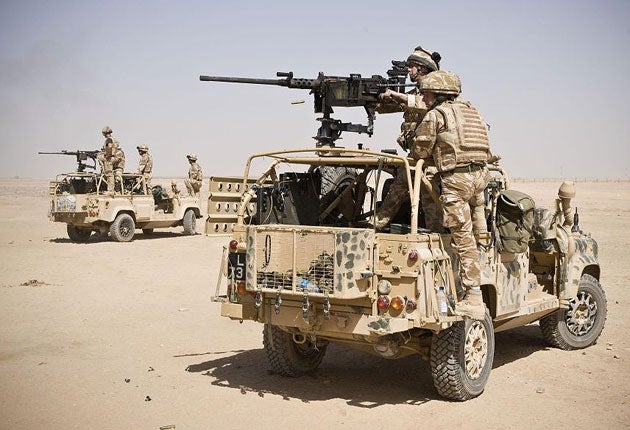Post traumatic stress rises among war zone soldiers

Nearly 4,000 new cases of mental health disorder were diagnosed last year among armed services personnel, according to figures published today.
Mental health statistics released by the Ministry of Defence showed 3,917 new cases of armed services personnel assessed to have a mental disorder in 2007 by the MoD's department of community mental health.
A breakdown of the statistics showed that, in line with the first nine months of last year, there were no statistically significant differences in the rates of overall mental disorder between those who had deployed to Iraq or Afghanistan and those who had not deployed during the last quarter of 2007.
But the figures showed a significantly higher rate of post-traumatic stress disorder (PTSD) among those who had deployed to Iraq and Afghanistan compared with those who had not deployed to these countries.
But the MoD said PTSD remained a "rare" condition affecting only 38 personnel seen during the last three months of 2007 who had served in Iraq and Afghanistan, compared to five who had not.
Chris Williams, director of the medical finance secretariat in the defence medical services department, said the "vast majority" of those who came forward for treatment were able to return to service.
Only about 150 people a year were discharged for mental health reasons, he said.
"What that demonstrates is that people who come forward and get treatment, the vast majority of them go back to service."
He added that the figures showing a higher rate of PTSD among those who served in Iraq and Afghanistan did not surprise him.
But he added that the "absolute numbers" were small.
The figures from the Defence Analytical Services Agency (DASA), an MoD agency, showed 868 personnel assessed with a mental disorder in the last three months of 2007.
Women had a statistically significant higher rate of mental disorder assessment at 8.2 per 1,000, double that of male personnel at four per 1,000.
The figures also showed higher rates of mental health disorder among ranks other than that of officer.
Other ranks had a statistically significantly higher rate of mental disorder at 4.9 per 1,000, more than two-and-a-half times that of officers at 1.8 per 1,000.
The Army and the RAF had similar rates of mental disorder assessments at 4.9 and 4.2 per 1,000 respectively with the Royal Marines and Royal Navy registering lower rates of 3.5 and 3 per 1,000 respectively.
Surgeon Commander Neil Greenberg, senior lecturer in military psychiatry, on secondment to King's College, London, said he believed the difference in rates of mental health disorder between men and women probably reflected those in society.
He added that the differences between the lower ranks and officers also probably related to factors that were brought into the services, such as social background.
Join our commenting forum
Join thought-provoking conversations, follow other Independent readers and see their replies
Comments